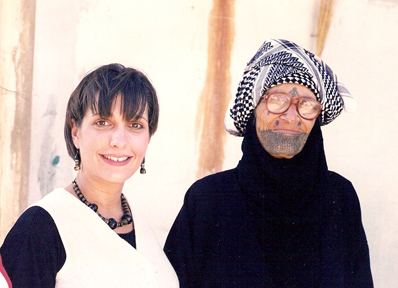 | ||
The Gharaibeh (Arabic: الغرايبه, also spelled Ghareibeh) is one of the tribes of the northern parts of Jordan.
Contents
Ancestry
The Gharaibeh clan is part of the Mud Plains of Houran. Named the Fallaheen, they are of the Jordanian side of Houran which used to be one single entity before the Sykes-Picot lines were drawn. Commonly mistaken for the Houran or Houranies are the "Hawarnehs" The origins of the "Hawarnehs" are a mix of different ethnic groups over the millennia, including Assyrian, Greek, Persian, Hebrew, Roman, Arab, Franks, and Turks.
The ancestry of this tribe is not definitely known. The lack of documentation such as birth records, death certificates, land records, etc. makes this tribe's history subject to debate and different accounts. Myth shrouds what little is known. One myth, for example, has it that this clan descended from the Arabic Bedouin tribe Bani Johma (also spelled Beni Juhma) which is believed to have followed Wadi Sarhan northwest for Northern Arabia. Another myth has it that Gharaibeh's ancestry is with little or no Bedouin heritage. There have been some unsubstantiated claims that the Gharaibeh were part of the Semitic tribes of the Hebron area and may have migrated during the 400 years Ottoman occupation from 1516-1918.
To confuse matters more, the name Gharaibeh can also be found under different spellings (e.g., Algharaibeh, Gharaybeh, Ghareibeh, and Garaybeh). It is however, written in one form in Arabic with and without the article "Al". The name comes from the word "Ghareeb", which means stranger or foreigner in the Arabic language. Elders in the family believe that the name was given to them after settling in a new village in northern Jordan, the name of which is still debated.
The main location of the Gharaibeh Family in Jordan is in a town called Huwwarah located in the Hawran plain in the Biblical "Land of Gilead" near the main northern city of Irbid and Ramtha (Ramoth-Gilead) to the East. A large portion of family members also reside in towns such as Al Mughayir and Al Hashimiya. Some have settled in all the major Jordanian cities including Irbid itself, Zarqa, and the capital Amman.
The family has also a strong presence in other Middle Eastern countries like in Palestine and in The Kingdom of Saudi Arabia (the original location of the Bani Johma Tribe).
The Gharaibeh family is subdivided into six main branches: Abdallat, Abdeyeh (including Nayeleyeh), Hajjiyyeh, Hamad, Sabbaheen and Shehadat.
Dress
The way men and women dress has changed over the years. Below are two traditional ways women used to dress. The traditional dress is gradually making way to Europeanized/Westernized styles.
Both of the below features dress codes feature the full length black dress (Thoab). The first dress at the top features the black and white Silik. The bottom head dress is famously known as the Bashkeer Aligmani, literally "German Towel".
Geography
Huwwarah (Arabic: حوّاره, also spelled Huwwara or Huwarrah) is one of many agricultural villages in the fertile mud plains of Houran (Hauran or Hawran) in northern Jordan. The mud plains of Houran bridge the gap between the Golan Heights in the west and the Sham desert to the east. The southern part of Houran is in North Jordan. Huwwarah if flanked by the ancient sites of Ramoth-Gilead (Ramtha, Jordan) in Gilead to the east and Arabella (Irbid) to the west. North, it is bordered by Sal and Bishra, and south and southeast it is bordered by Sareeh.
